In Central America, Clues about Golden-Winged Warbler Migration
As conservationists mobilize to create and protect rapidly disappearing Golden-winged Warbler breeding habitat in North America, a crucial starting point for their work is more than 4,000 miles away, in the tropical forests of Central America.
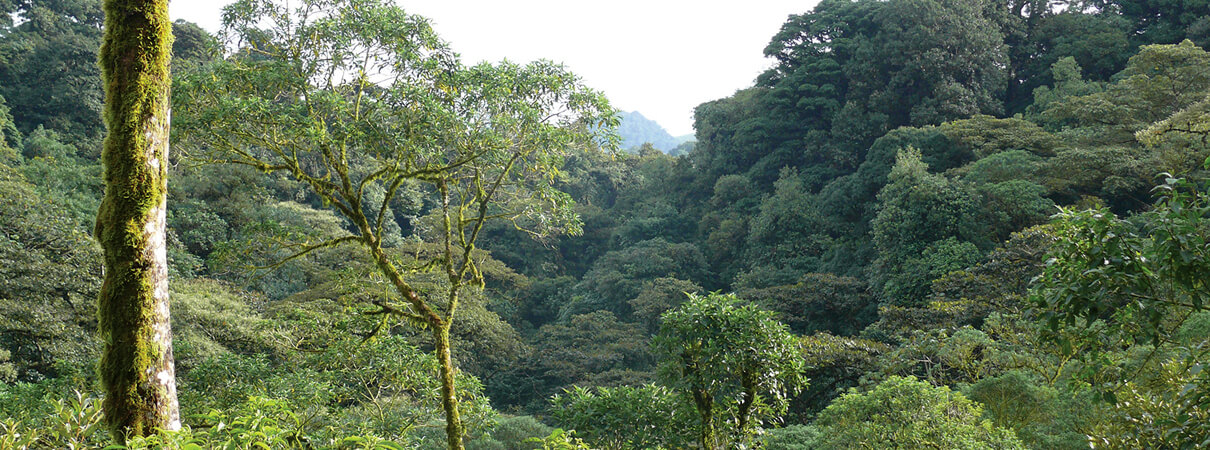
El Jaguar Reserve in Nicaragua provides crucial wintering habitat for Golden-winged Warblers and other neotropical migrants. Photo by Andrew Rothman
The north-south coordination is critical, says Jeff Larkin of Indiana University of Pennsylvania. “It's important to make sure conservation efforts on the wintering grounds and the breeding grounds align” in order for the species to benefit most, he says.
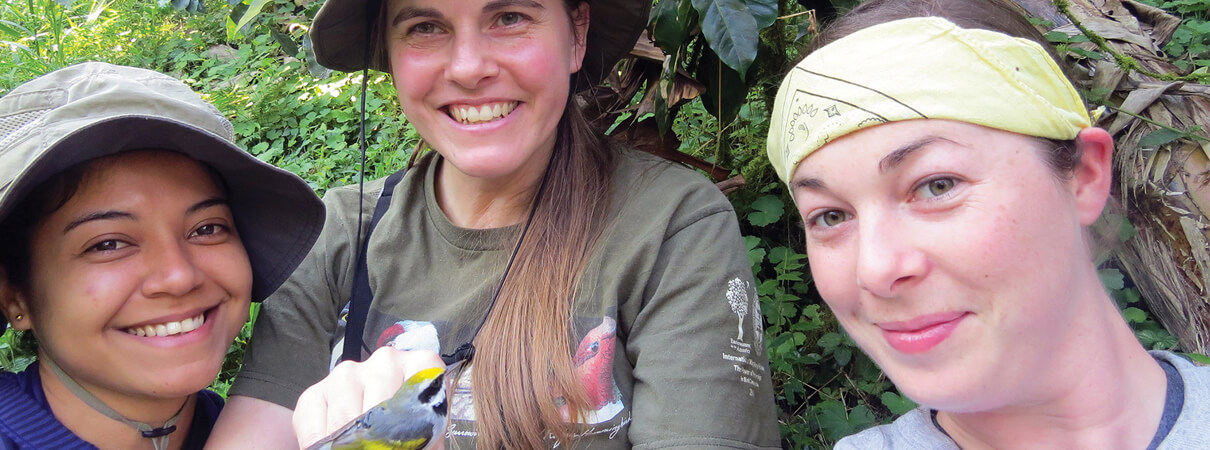
Working at El Jaguar Reserve, from left to right, Fabiola Rodriguez (IUP), Amber Roth (University of Maine), and Kirsten Johnson (IUP). Photo by Jeff Larkin
Earlier this year, researchers attached geolocators to 146 wintering Golden-winged Warblers in nine focal conservation areas in Panama, Costa Rica, Nicaragua, Honduras, Belize, and Guatemala. This fall, when the birds return, researchers will recover the devices and obtain valuable information about where the golden-wings spent their breeding season—and how they got there and back.
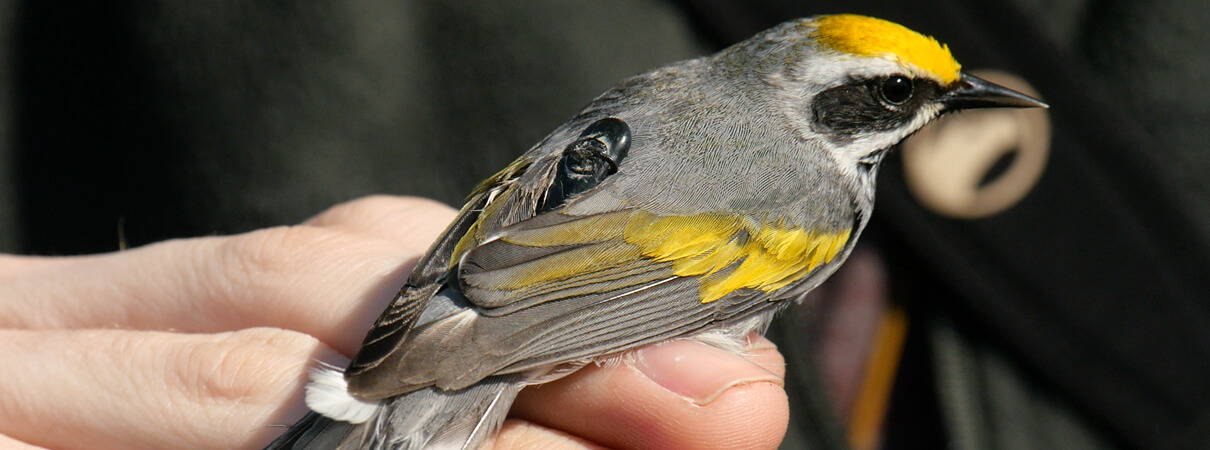
The tiny device on this Golden-winged Warbler's back—known as a geolocator—tracks the bird's location on the globe by recording daylight. Photo by Aditi Desai
(A similar project is looking at the migration of Cerulean Warbler; one special bird named Elmer has been the focus of this study and revealed new information about the species. See a video.)
Shade-grown Coffee Supports Warblers and More
On their wintering grounds, golden-wings can be found in a diversity of conditions from dense primary cloud forests to fairly open woodlands and agroforests, which are created by incorporating trees and shrubs into agricultural landscapes. Nicaragua's El Jaguar Reserve is one such site. Here, Lili and Georges Duriaux remodeled their organic coffee farm to a shade crop to promote biodiversity. The ABC-supported reserve is now a sanctuary for the warblers and many other migrant and resident birds, as deforestation continues to deplete wintering habitat elsewhere.
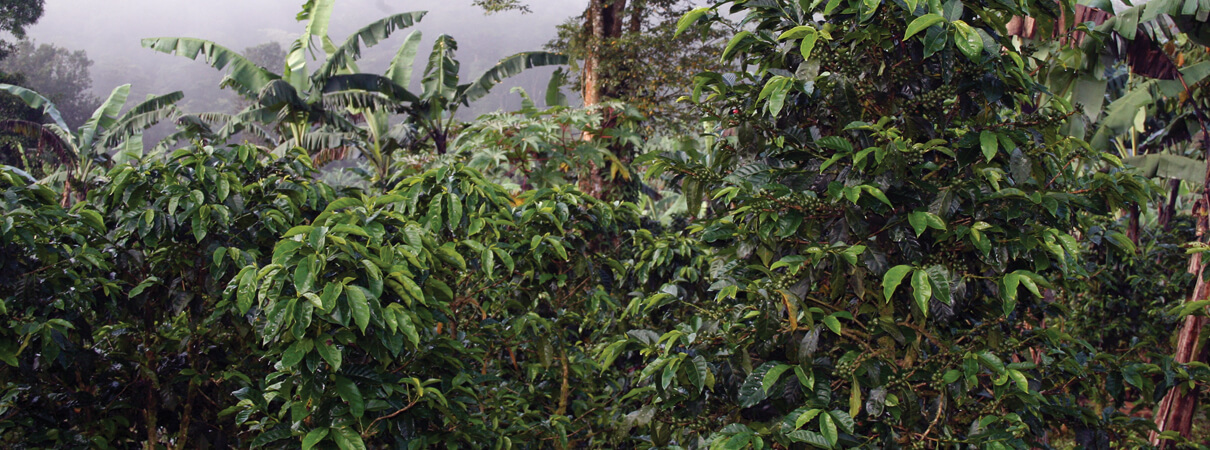
Shade-grown coffee supports a diversity of bird life, because the coffee plants grow in the shadows of taller trees that provide shelter and habitat for birds and their prey items. Photo by Georges Duriaux
This landscape on the golden-wings' wintering grounds is rugged, steep, and teeming with biodiversity. Dense vegetation is broken up by the occasional bean, potato, corn, or coffee crop, and the calls of dozens of bird species reflect the diversity of the farm.
Tiny Birds. Big Clues about Migration
Once researchers recover the geolocators this fall, they will download and analyze those data and share the information with the conservation community so that it can be put to use. With this new information, conservationists will be able to pinpoint the Golden-winged Warbler's key wintering and breeding grounds and important migratory stopover areas, helping to provide effective conservation action across the birds' full life-cycles.
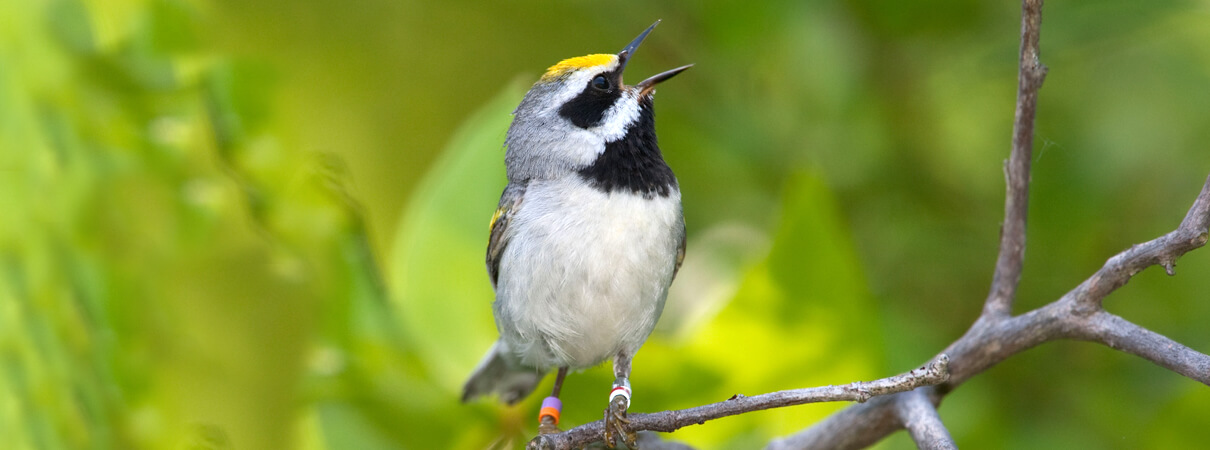
Golden-winged Warblers nest in North America, but spend their winters in Central and South America. Photo by Cal Vornberger/Alamy Stock Photo
The research is already providing valuable data. A 2015 pilot project revealed that six Golden-winged Warblers traveled from El Jaguar, their wintertime sanctuary, to breed in northern Minnesota and Wisconsin—where ABC staff are working with partners to restore and maintain the young forest habitat this bird requires to nest.
Editor's note: This article first appeared in the fall 2016 edition of Bird Conservation magazine.
With your support, we can better protect the places that Golden-winged Warblers and other migratory birds need to survive. Click here to donate.
 Audrey Goldfarb was American Bird Conservancy's writing/communications intern during the summer of 2016. She is currently an undergraduate at the University of Rochester, where she is pursuing a bachelor's degree in molecular genetics.
Audrey Goldfarb was American Bird Conservancy's writing/communications intern during the summer of 2016. She is currently an undergraduate at the University of Rochester, where she is pursuing a bachelor's degree in molecular genetics.


















































